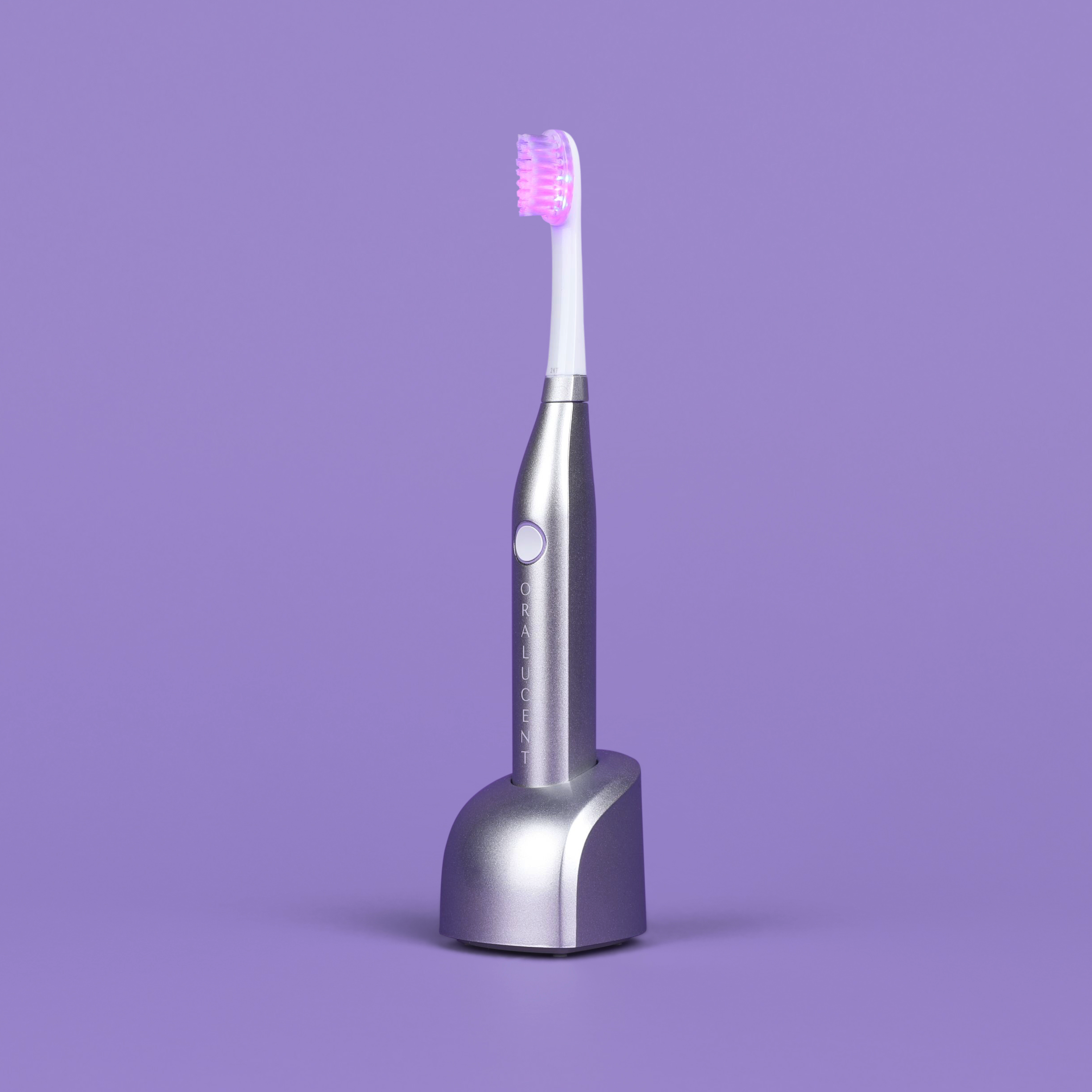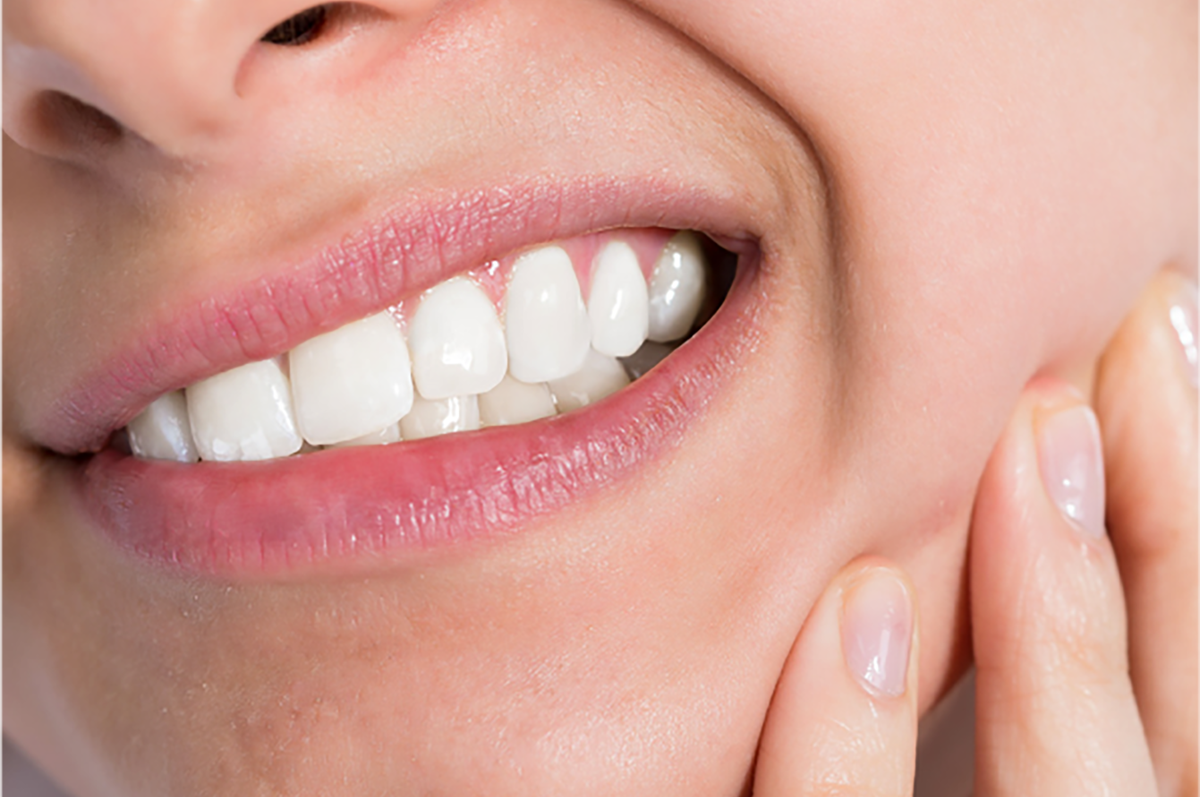What Causes Swollen Gums
Plaque and Tartar – Most swelling of the gums is due to one cause: bacterial plaque. That white, filmy debris that congregates along the gumlines and on the surface of your teeth causes not only cavities, but gum infections as well. That’s because the plaque builds up along the margin of the gumlines and also begins to creep in underneath the gum pocket, infecting the gums from the inside out. Once plaque gets into an area and isn’t cleaned out thoroughly, it causes an immune response in the body which then leads to inflammation of the tissue. Calcified plaque is called tartar or calculus, which can only be removed by a dental provider.
Irritation – Allergic reactions to ingredients in toothpaste, food, medications, or even metal dental restorations can cause irritation, redness, or swelling of the gum tissue. Most people find that changing out their toothpaste is usually adequate if they recently started using a different brand when the symptoms began to occur.
Food – Food that becomes lodged under the gums or between teeth can be hard to clean out, especially if it happens frequently throughout the day. One example of a food that becomes stuck under the gums quite commonly is popcorn; the kernels often find their way down under the gumlines and into the bottom of even the healthiest gum pockets. Within a day or two, swelling is present, until the popcorn is removed or works its way out naturally.
Wide spaces between the teeth, due to gum loss, tooth alignment, or gaps between dental restorations will also cause food to collect after each meal. Not being removed with floss will likewise create a response from the body and initiate swelling until the debris is physically removed.
Burning your mouth on foods like pizza, nachos, or coffee can create a temporary area of trauma in the mouth. These usually only last 10-14 days and are directly related to the heat of the food on your gum tissue.
Stages of Periodontal Disease
Old or Faulty Dental Restorations – Rough margins along aging or faulty dental restorations can give plaque an area to hang on to, making it difficult or impossible to clean around. These areas almost always have chronic swelling around them, even in some people with the best oral hygiene habits. Crowns are a classic example of how plaque can cause inflammation around a dental restoration; not brushing along the gumlines of a crown will often cause bacteria to remain right along the margin, which quickly causes inflammation until it has been cleaned away on a regular basis.
Ill-fitting dentures or partials can also rub the tissues and cause sores or swelling.
Hormones – Some women find that hormone levels cause swelling of the gums. This is usually temporary, with the longest cases typically being associated with pregnancy.
Tooth Misalignment – Crooked, crowded teeth are more likely than any teeth in the mouth to have swelling around them. That’s because crooked teeth are more difficult to keep clean and often have areas that are skipped over, allowing bacteria to build up around them.
Medications – If it seems like you have the best oral hygiene practices and techniques, but swelling is still present, then it’s time to take a look at what medications you are on. Some medications like those for high blood pressure will create an excess growth of fibrous gum tissue that looks like swollen, unhealthy gums. Most people that experience this will see it on the lower front teeth, and the tissue will appear light pink or coral in color, not the red tint that is specific to infection. It’s important to remember to not discontinue any medications without consulting your primary care physician, even if they have unwanted oral side effects.
Abscesses – Tooth decay that has spread into the dental nerve can cause a localized pocket of swelling near the root of the tooth. This is due to the infection attempting to drain itself.
Symptoms of Swollen Gums
What do swollen gums look like, and how do you tell them apart from healthy gingival tissue? The key is to know what healthy gums look like and being able to spot the areas where inflammation first comes into play.
Healthy Gums
- Light pink, coral, or natural tissue pigmentation throughout mouth
- Smooth and flat along the gumlines
- Pointed papilla between each tooth
- Don’t bleed when you brush or floss
- No pain
Inflamed Gums
- Typically, dark pink, red, blue or purple
- Rolled margin along the teeth
- Blunted papilla between the teeth, or no papilla at all
- Bleeding when you brush or floss
- Uncomfortable to severe pain
Inflammation is one of the first signs of an oral infection. Knowing the signs can help you stop swelling and reverse it completely, before more significant problems develop.
How to Treat Swollen Gums
Thankfully, swollen gums can often be treated and completely reversed on your own, with the right dedication, oral hygiene aids, and a balanced diet. By physically removing the bacteria and taking an approach to balance your diet, you can typically reverse mild to moderate inflammation within 2 weeks.
- Brushing – Selecting a good toothbrush and having the correct brushing technique is one of the most influential factors in reversing swollen gums and gingivitis. Select a soft-bristled toothbrush that will be gentle on the gum tissues, and only use as much pressure necessary to cause light blanching of the gums (anything more will cause enamel abrasion or gum recession.) Angle the brush 45-degrees toward the gumlines and make small back and forth strokes on just one or two teeth at a time, targeting the margin of the gums. Continue around the mouth for at least 2 minutes, twice each day. Utilizing an electric toothbrush will increase the amount of plaque removed, improving your success at eliminating gingivitis.
- Blue Light Technology – Blue light technology is scientifically proven to kill harmful oral bacteria that causes gingivitis, plaque, bad breath and gum pockets. Oralucent utilizes this blue light technology in their toothbrush to kill harmful bacteria that causes swollen and inflamed gums.
- Flossing – Cleaning between the teeth and under the gumlines can only be achieved by flossing – be it with traditional floss, water flossing, floss picks or some other type of interproximal cleaner. Without cleaning under the gums, swelling will never completely go away. Continue flossing once each day, regardless of whether or not bleeding is present.
- Topical Rinses – Essential oils are an ingredient found in some types of over the counter mouthwashes and are also available at health food stores for topical application. Many oils used in rinses or on a toothbrush can have a direct impact on reducing inflammation and bacteria that causes swelling.
- Diet – Increasing your vitamin intake and getting enough water, fresh vegetables, and limiting sugar will help your body’s immune system become more effective at fighting infections like swollen gums.
Professional Care
If the swelling is so severe that it extends through the area of tissue around the roots of the tooth, then a more severe treatment like moderate to severe periodontal disease may be present. Severe infections like this will also require a professional dental cleaning to remove deep areas of calcified bacteria from the surface of the roots. Once professional cleanings have been completed, it is still extremely important to maintain a rigorous oral hygiene routine at home each day. Otherwise, the bacteria that causes the inflammation in your mouth is likely to return, and the condition to continue. Most dentists and hygienists recommend cleanings twice each year to remove calcified debris, monitor tissue conditions, and prevent advancement of periodontal infections. Those patients with active periodontal disease will need to be seen more frequently to maintain bone structure and prevent advancement of the disease until it is reversed.
Correcting problems like faulty restorations or misaligned teeth will mean it is necessary to have new dental treatment performed, or orthodontic care. In cases of severe swelling, a topical gel or rinse may be prescribed.
References
- Erbe C, Klukowska M, Tsaknaki I, Timm H, Grender J, Wehrbein H.; Efficacy of 3 toothbrush treatments on plaque removal in orthodontic patients assessed with digital plaque imaging: a randomized controlled trial.; Am J Orthod Dentofacial Orthop. 2013 Jun;143(6):760-6. doi: 10.1016/j.ajodo.2013.03.008.
- Stoeken JE, Paraskevas S, van der Weijden GA.; The long-term effect of a mouthrinse containing essential oils on dental plaque and gingivitis: a systematic review.; J Periodontol. 2007 Jul;78(7):1218-28.




